On the other side of the stand
You did not notice (this statement) that all articles about conferences and exhibitions are divided into two types.
The first is the posts from the organizers. Using all the cliches and clichés known to mankind, they tell us how great it will be for them at their conference, then write how everything was great, in the hope of making it enviably non-come. Insider articles on the process of organizing conferences, what they face, and how everything is heroically decided five minutes before the start, serve as a ray in the dark kingdom. The main thing here is not to let marketers in, so that the material is really alive, and everything will be fine.
The second type is posts from ordinary visitors. Someone praises the organizers, someone scolds how much in vain, somewhere gives a frank order, but in general, these materials allow you to get some kind of averaged idea of the past event and conclude whether it is worth visiting the following.
But there is also a third type of exhibitor at the exhibitions, without which all this exhibition and festival happiness could not have happened at all. These are people working at sponsor stands, in common people - standmen. And no, the girls in miniskirts giving out a souvenir do not belong to them.

Having returned from three large conferences (RIT ++ 2019, DotNext 2019 Piter and Heisenbug 2019 Piter), I decided to write this article to reflect on why sponsors spend money on all this, how much it costs, what is the work on the stand, why souvenirs are always lacking at all, and highlight the other nuances of this hidden from most of the world.
PS As a subtitle, I decided to use the polar feedback from visitors about our booth, which the organizers send us after the conferences. With what specific these - I will not say.
I don’t remember // I liked the stand, questions, prizes
First, let's see why sponsors go to IT conferences and spend decent amounts of money for this?
Here, each company answers this question in different ways, based on its goals and type of event. But globally, the reasons for participation can be divided like this:
- Elimination of information hunger. A problem not familiar to large B2C companies, but a constant headache for B2B and B2C beginners. You can be an arbitrarily large company with offices around the world, an excellent product with a long history and a lot of money in the budget, but how cool you are - only your customers will know. And this means that when you hire people, you are doomed to constantly tell who you are at all, trying to gain trust and interest. While the working conditions can be fabulous. Just the job seekers do not know you, and this becomes a real problem.
- Maintaining noise. This is a consequence of the first point, characteristic of large companies. At some point, you should already be with your stand at specialized events simply because you should. People know about you, they love and remember you, but if you stop flashing before your eyes, your souvenir will not be as fun as before, but instead of a huge stand there will be a table with paper advertising - everyone will decide that you are doing bad and closing is nearing . A typical example is cola ads. She has not needed advertising as such for a hundred years, but they are dumping exorbitant budgets in maintaining brand visibility.
- Selling your solutions. Of course, if we are not going to sell tomatoes, we are talking about indirect sales. If you bring your product to the place of maximum concentration of its target audience, you will receive real reviews, listen to pain and be able to show how you help to get rid of them. Almost everyone does this: from manufacturers of IDEs and code analyzers to startups expanding the client base.
- Hunting people. In the minds of the public, this is precisely the very thing for which sponsors are ready to carry any money to the organizers. After all, all the stands are as one, sleeping and seeing how to collect your data, so that later it is terribly spamming with vacancies and other advertising. However, I hasten to upset, everything is somewhat different.
Let's estimate what is the probability of finding a developer / tester after a mass mailing based on the results of a conditional hikpik, where you can easily collect a thousand contacts in a day? Hardly very big.
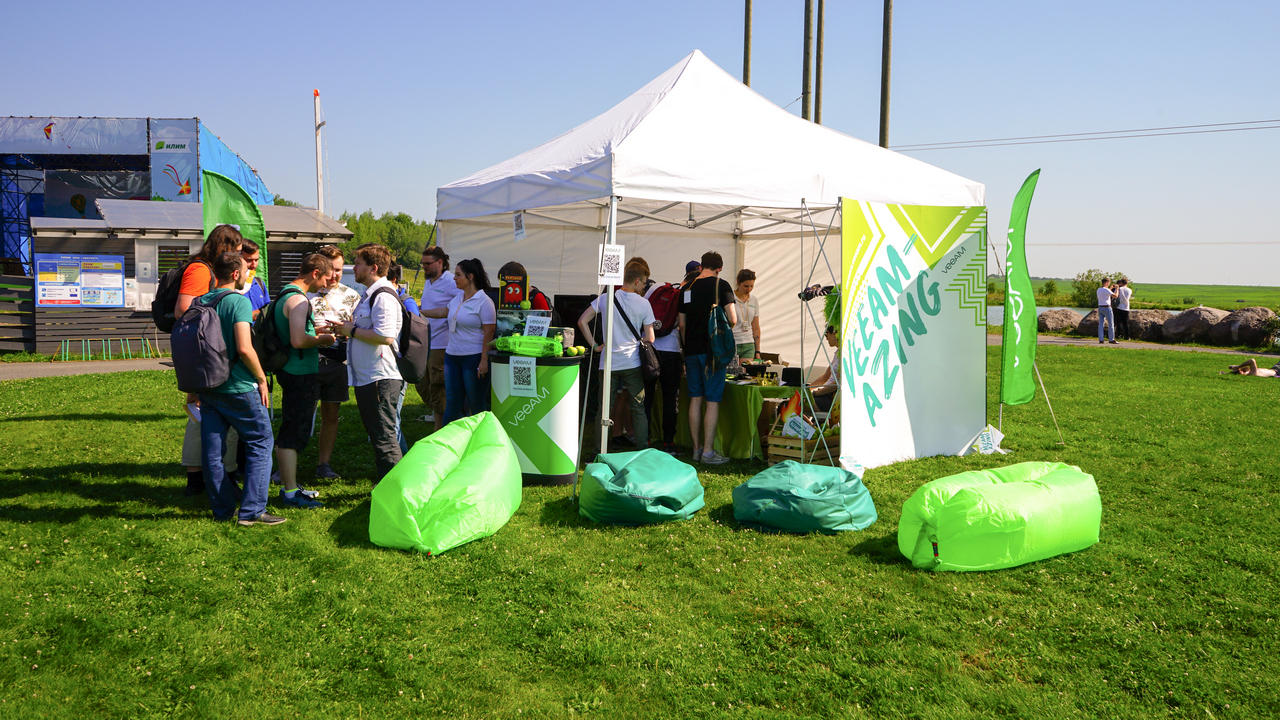
Go to a profile conference with expensive tickets and purposefully hunt? The idea is good, but most of the audience there are people with a high level of trust from the current employer, and it is unlikely that any of them will drop everything right away and come to you tomorrow. Also do not forget about the quality of the collected contacts. Usually visitors are asked to indicate first / last name / mail? and well, if it's true. Yes, then they can send a letter with conditional content “Thank you for visiting our booth” by mail, but that’s all. Some may automatically subscribe to some newsletter, but decent people have not done this for a long time.
The exception is student job fairs. Nowadays it’s bad with sensible junas (very much from the word), and so far no one has canceled mass-recruited vacancies, so if you want to fight for you explicitly, be a student and go to job fairs.
Absolutely incompetent people at the stand // Friendliness, clearly talked about products and technologies
Now let's talk about the standmen and their fate.
The public strongly believes that in 90% of cases only recruiters stand at the stand. In fact, everything is much trickier here.
There are indeed recruiters at most stands, one might even say that at all. But the purpose of their presence is not to rush at every suitable person in the hope of closing a vacancy, but to answer visitors' questions.
It all starts with the typical “Have you heard about our company?”. Then they will take an interest in who you work with, tell you what the company has in this profile. If the company doesn’t have anything even remotely similar, they will not expel you or immediately lose any interest, but continue a nice conversation. What for? To create a favorable image of the company. There are no vacancies today, but tomorrow there are, and talking with interesting people is always a pleasure. So when you sit in a bar and in a conversation the name of the company about which you don’t remember anything pops up, you have a pleasant feeling on the subcortex.
But what about contacts, addresses and phone numbers, you exclaim? Yes, they do not need contacts of all. Healthy people have not been working like this for a long time. Now, if a visitor starts actively and with obvious interest to ask the right questions, a completely different conversation begins with him. Much more substantive and detailed. And now this may already end with the recruiter asking you to leave data for communication. Do you know how many times this can happen in one day? Five for the whole booth is just a great result. Ten is on the brink of science fiction. If at least one is later hired, then participation in the conference paid off. The average number of visitors to the stand is 70% of the total audience. Most conferences are from 800 to 1000 people. So consider ...
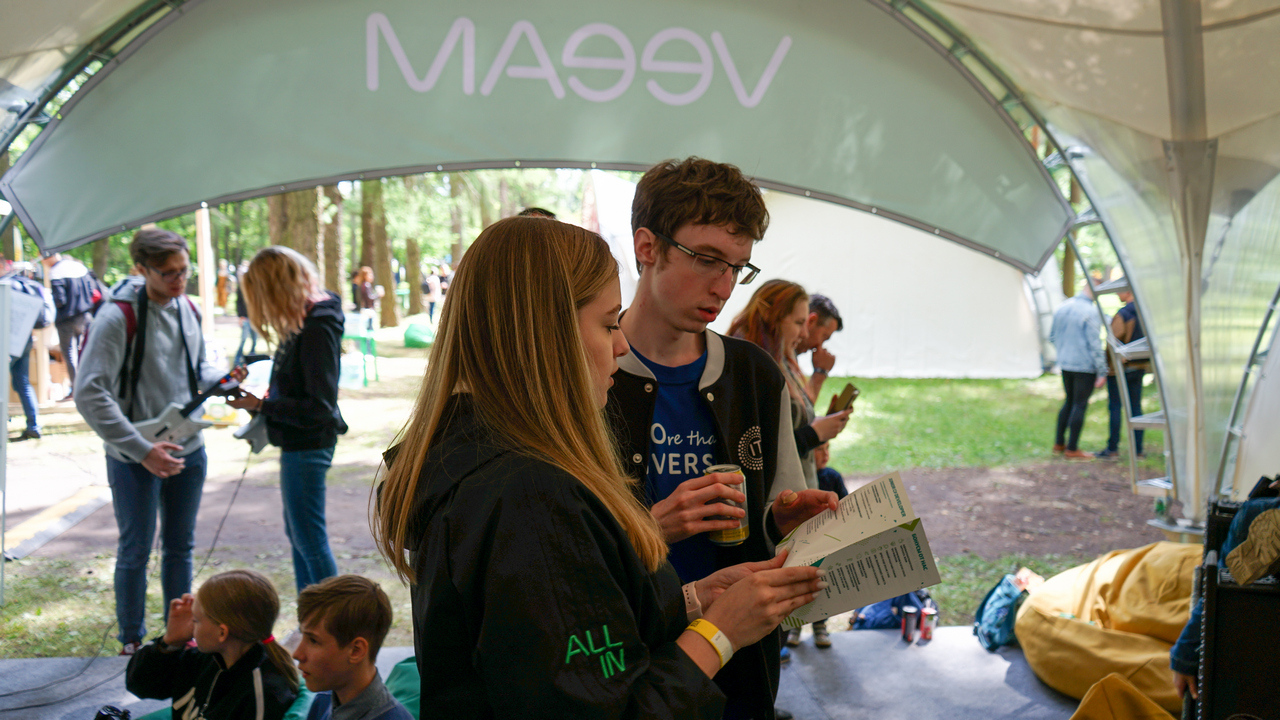
But not single recruiters. We are going to a technical conference, which means that we need to capture at least one person who knows how our products work. Here, everyone is casting out, who is in what much. You can take a volunteer from technical support, you can from a presale of engineers, or you can even someone from development or testing. And someone even turns on special people called evangelists or derels (hello). If we go to a specialized event, we also immediately close the question of the presence of a person according to the profile, who, naturally, is better than any recruiter can tell about the features of the development. But there is a nuance, where without it! If your company is large, but there are many products, then no matter how cool the developer is, the product as a whole he knows much worse than technical support. Therefore, for the most part, if the company wants to be well represented and ready to invest in this, they go to the stand as a couple: a representative of a profession related to the general theme of the event, and a person with more general knowledge of all products (albeit not as deep).
And the cherry on the cake is the participation of your company representative as a speaker. Here, many people think that if you entered sponsorship money, it means that you automatically received a slot for the speaker. But no, conference organizers (except for the most openly marketing ones) are directly interested in having the highest quality reports, so there are no preferences for sponsors.
And since the conversation about “investing” has started, it's time to talk about the most interesting. About the money.
Presents are poor // Cool main prize - sorry, only one
Participating in conferences is expensive. Very expensive. The total costs for one event easily reach a million (rubles, of course). So let's figure out where this amount comes from.
First of all, we need to buy a sponsorship package. Usually there are a lot of them, the buns in them are growing, but we are interested in those who give the right to put up a stand and provide some kind of media coverage. If we go to a local conference of the average hand, a package that suits us can be bought for 100-150k rubles. If the conference is organized by professionals like JUGRU or Ontico, we prepare about 300-500k. And if you swipe at global events like Hikpiknik, then you decide that I invent these numbers.
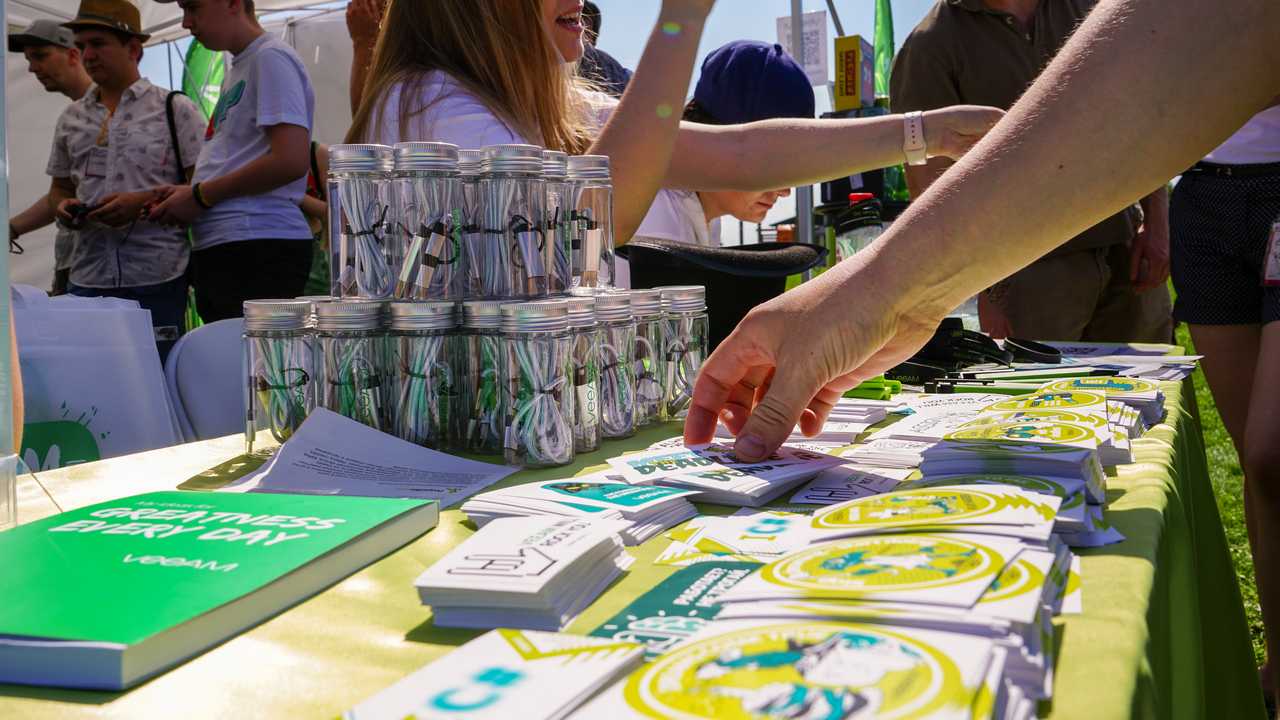
Then comes the stand. It all depends on the organizers. Who was at RIT ++, they could notice that all the stands were made in the same style. This is the condition of the organizer, and he is engaged in building on his own. You will only be asked to provide design backdrops. Although no one forbids to come and build your stand on your own, in your design. Then you will pay only the space for the stand, and you will order it somewhere else, for separate (not small) money.
Another option is when you yourself carry your stand. This is exactly the flimsy design that you see almost everywhere. It costs relatively inexpensive (~ 50k), folds into a convenient wardrobe trunk on wheels, you can use it many times until it either falls apart or your designers decide to dramatically change your brand book.
And there is a third, most expensive and rare option. These are stands representing a full-fledged design, such as Vkontakte on Heisenbug. Such stands are made by special companies, they store them in their warehouse, they carry themselves wherever you say, and take them back after the event. As you know, pleasure is not cheap.
People are required for the stand. Experience has shown that the optimal number of stand attendants covering all issues is 4-5 people. If the event is on the weekend, please be kind enough to pay them a day at a double rate (the Labor Code of the Russian Federation in a decent society is customary to observe). If in another city, the costs of moving and hotel are added from above.
And in no case do we forget about her majesty a souvenir (she’s a razdatka, she’s a loot, she’s a freebie, etc.). Everything is already limited here by your imagination and budgets, but practice has shown that you can easily kill most of the budget with a razdatka. Pens, stickers, etc. uncontrollably distributed in their mass easily absorb up to one hundred thousand, although the price for a standard unit rarely exceeds 50 rubles. Here it must be understood that even the most miserable pen will cost 2-3 times more expensive than in the store, due to the premium for applying the logo and logistics. If you have puzzles or some kind of interactivity at the stand (and now they’ll laugh without it), it would be nice to provide participants with comforting prizes. Yes, and give them the opportunity to choose between the options. There is already a conversation about hundreds of rubles per unit. And at the end of the event, please be kind enough to arrange the drawing of the main prize. Here the scatter will be from backpacks to iPhones.
Haughty staff // Incredibly nice and positive guys
Let's imagine that you were offered to work at the stand, and you agreed. In fact, you are a great fellow, and I want to give you some tips on how to survive this day (s) with maximum benefit and minimal damage to yourself =)
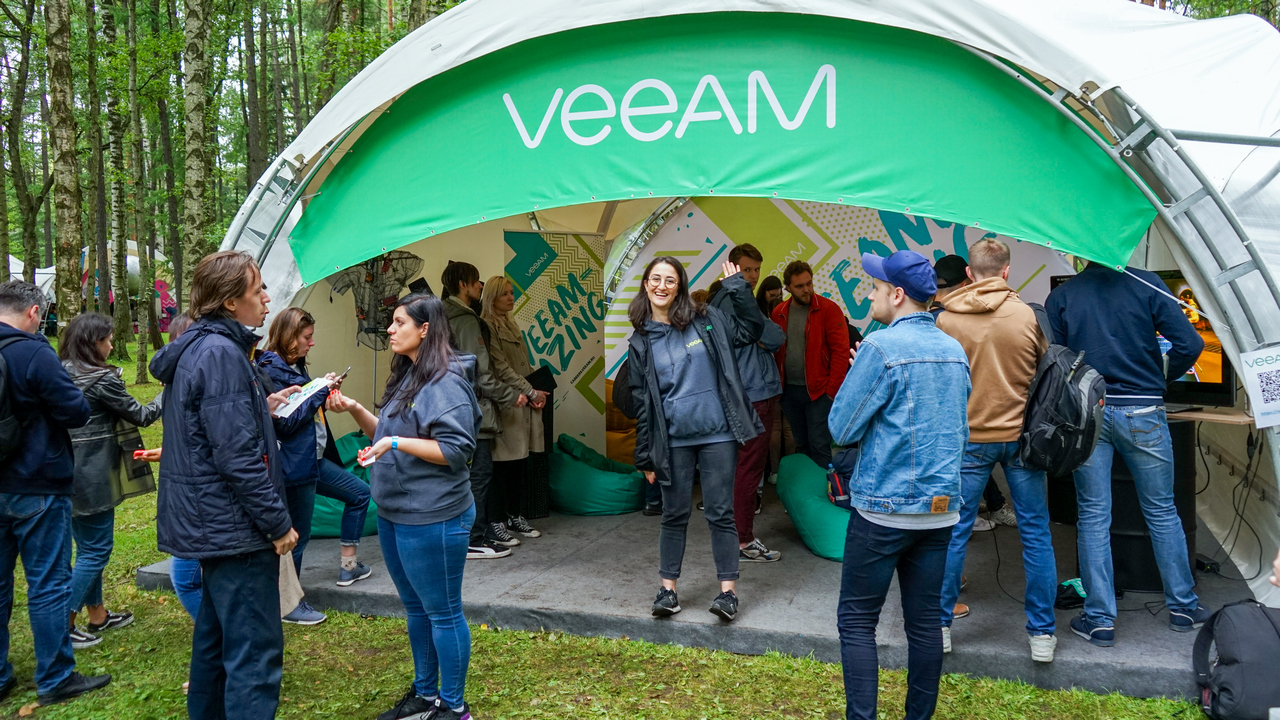
The main thing to understand and accept is that you will spend this day on your feet and will talk a lot (a lot). If konf for two days, then two days on their feet, etc. This is quite difficult physically. Up to the point that by the end of the day your mouth may naturally hurt and you will talk a year ahead. Your task is not to stand somewhere in the background, but to actively interact with people. Remember yourself when you come to the stand and there is an awkward silence. Banal "Hello, do you know about our company?" relieves the situation by two orders of magnitude and prompts us to start a dialogue. Only now you have switched roles and you should start the dialogue. The first 10 times will be very unusual, and then it will go by itself.
Do you know what is really difficult? Answer the most banal question: "Tell me what your company is doing?". I understand that this sounds extremely strange, but let's do a simple simulation: ask this question for yourself and give an answer to it almost immediately and in one sentence. Here to make it as clear and without unnecessary words. Perhaps you will succeed, maybe not, but regardless of the result, try to do it again. Once again. And so every five minutes. Of course, you can memorize a certain blessed definition, but imagine for yourself how false this will sound. Therefore, it’s easy to hear pearls from standmen like “Yes, we are doing everything”, “We write sites” and other lengthy descriptions. Therefore, do not hesitate to clarify. With this you will help a lot to give an answer.
In general, my most important advice to those on both sides of the barricades is to communicate at ease. The IT community for the most part is very friendly and united. Therefore, getting to the conference, you don’t have to invent anything, just communicate how you do it at work, and people will reach for you.
Some kind of tin, not quiz // Excellent tasks (the best on this conference)
Let’s say a little about tasks / quiz / quiz /% your version% at the stand.
A recipe for success in this area was not found, so everything is limited by the imagination of the standmen and the allocated budget. Some people prefer to give tasks on very serious courses, others bring an entertainment program, others just give out souvenirs for feedback on the company's products.
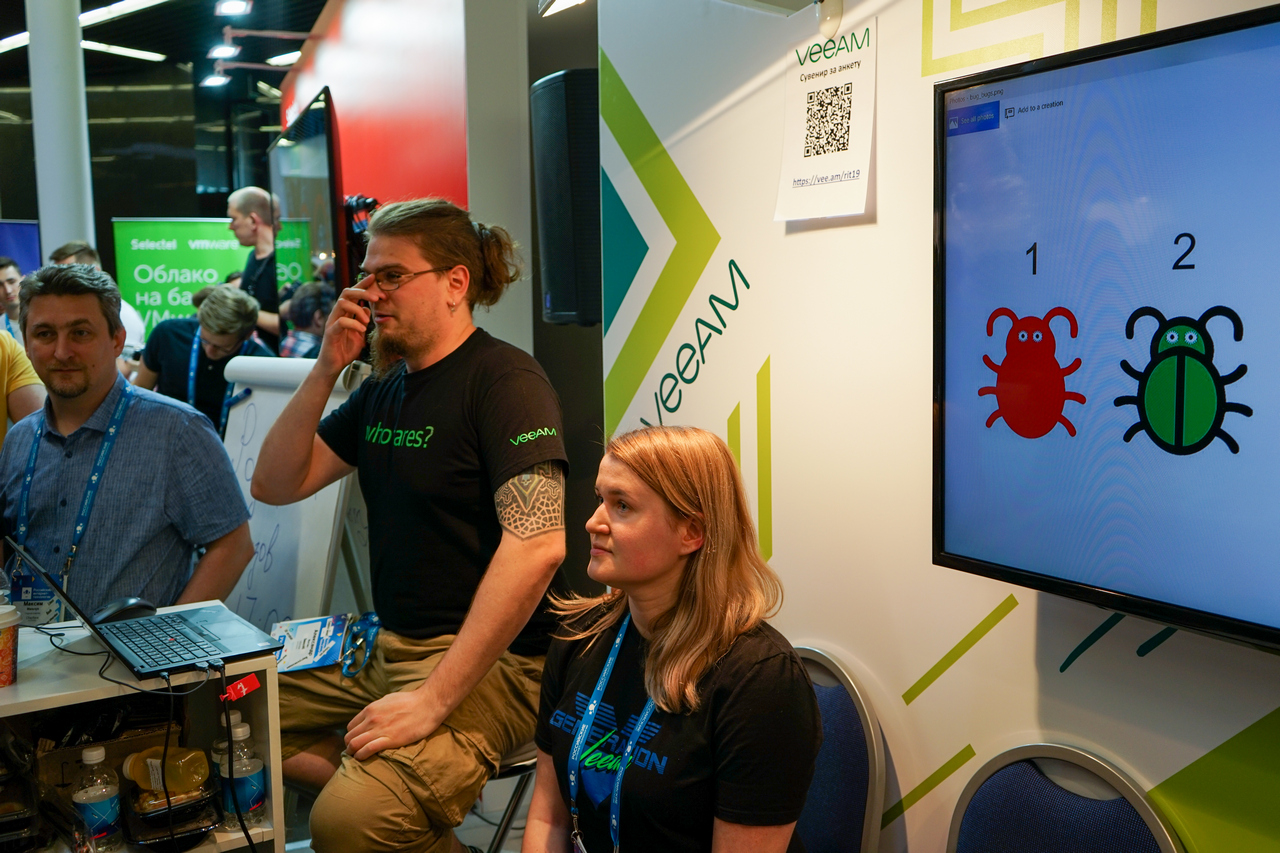
In our search, we came to the recipe that we all have enough work and work (suddenly, right?), So we stopped giving tasks “according to profile”. Therefore, no more Find 10 errors in the code, Enter the missing iptables rule and similar game. Our recipe is fun logic problems based on elementary mathematics and the ability to think out of the box. This content is not easy to make, unless you are a genius like Jacob Perelman who wrote “Entertaining Arithmetic,” but the percentage of positive reviews has grown significantly. Although the dissatisfied also remained, but they always are. There is even a certain percentage of people who sincerely believe that all gifts and prizes should be given to them simply upon their presence at the event.
But everyone has the right to a personal opinion, but we like that people always come to the analysis of tasks and there are practically no dissatisfied people.
Conferences are different
It is time to move from theory to practice, the good memories are fresh and there is something to compare.
So, in Russia there are two main organizers of IT conferences. These are JUGRU and Ontico. The assets of the first are many specialized events, such as Heisenbug, Holy JS, Joker, etc. TechTrain emerged from broad-based conferences that year. We can say that this is almost Hikpiknik in the form to which he was supposed to come. On the other hand, Ontico is speaking, they are also Oleg Bunin's conferences, where the most famous events are designed for the general public: these are Highload ++ and RIT ++, and profile conferences are not so popular yet.
Where is better - on hardcore konf on a profile or where the hodgepodge is an open question. On the one hand, if you do not understand anything in the reports on one thread, you can always go listen to something radically different, but also interesting. Great examples are the Whale Rider and DevRel streams on RIT. No technicals, continuous soft skills, but after listening to five minutes, you understand that it’s not a single technique, and you get involved. You recognize the situation on the other side of the barricades, so to speak.
On the other hand, you will not have such a strong immersion in the subject area. But here we must accept that any conference is primarily a platform for communication, where you constantly meet with someone and discuss something. And unlike communication in the office, at conferences it is much easier to meet the opposite opinion, supported by working projects.
Here I want to curtsey towards Skolkovo, where RIT ++ takes place. A huge area, many small meeting rooms, some nooks, corners and sofas i.e. all conditions are created to find a quiet place for communication at a crowded conference. But, again, there are downsides. Skolkovo is a domina in the middle of a field where there is nothing. If you suddenly need something, you won’t be able to run to the nearest store. Or wait for the transfer to Moscow, or take a taxi to the same Moscow. But this one has its own positive side =) A conference without a buffet table and not a conference somehow. If at the "city" event you don’t make some kind of entertainment program at the buffet table, then pretty soon everyone starts to crawl, some in taverns, some just for a walk around the city. It was significant on DotNext, where a cover group of developers performed and quite a lot of people remained. But on Heisenbug, where entertainment was not provided, in half an hour the hall was almost empty. Skolkovo has nowhere to go, especially if you live in a local hotel. But here Ontico came out on the solid five, providing almost all possible types of leisure. Fans of tabletops were given tabletops, fans of intellectual games made a Brain Slaughterhouse, those who wanted to relax with foam drinks also provided everything. And what I want to note as a separate point - the organizers did not allow to crawl through the territory with alcohol. And it’s not so that they simply drove everyone into one room and did not allow people to go out with glasses, but rather competently allocated a large, but still limited piece of territory, on which there was not only beer, but also other entertainments.

What I want to say in the form of a final chord: it is felt that the level of domestic conference has grown steeply and continues to grow. They will never be as massive as in the West, if only suddenly the format of conferences in English will become as popular with us. On the other hand, is it necessary to follow what has already been done or is it better to build your own?
All Articles